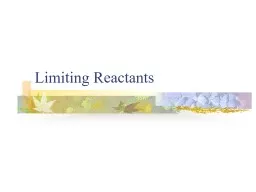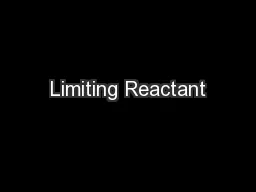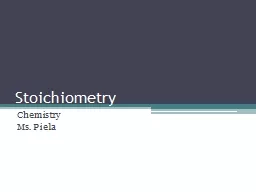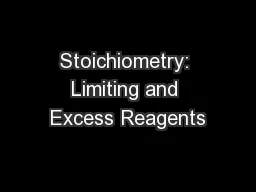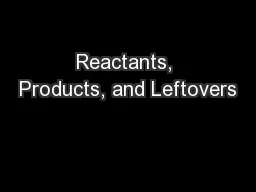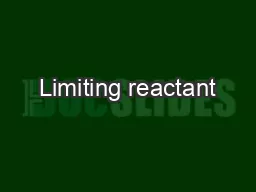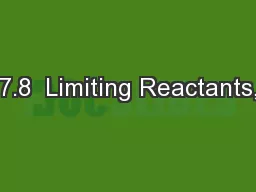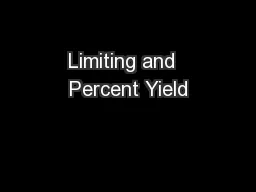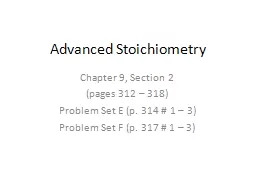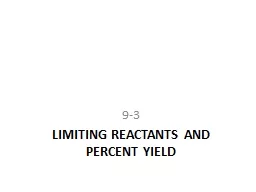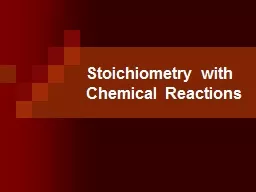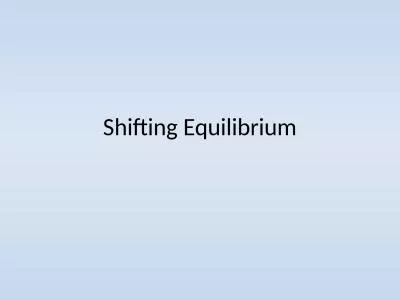PPT-Limiting Reactants Limiting Reactant
Author : karlyn-bohler | Published Date : 2018-09-22
If it takes 500 bricks and 1000 boards to make a house how many houses can you make from 1600 bricks and 2000 boards 2 houses there are enough bricks for 32 houses
Presentation Embed Code
Download Presentation
Download Presentation The PPT/PDF document "Limiting Reactants Limiting Reactant" is the property of its rightful owner. Permission is granted to download and print the materials on this website for personal, non-commercial use only, and to display it on your personal computer provided you do not modify the materials and that you retain all copyright notices contained in the materials. By downloading content from our website, you accept the terms of this agreement.
Limiting Reactants Limiting Reactant: Transcript
Download Rules Of Document
"Limiting Reactants Limiting Reactant"The content belongs to its owner. You may download and print it for personal use, without modification, and keep all copyright notices. By downloading, you agree to these terms.
Related Documents

